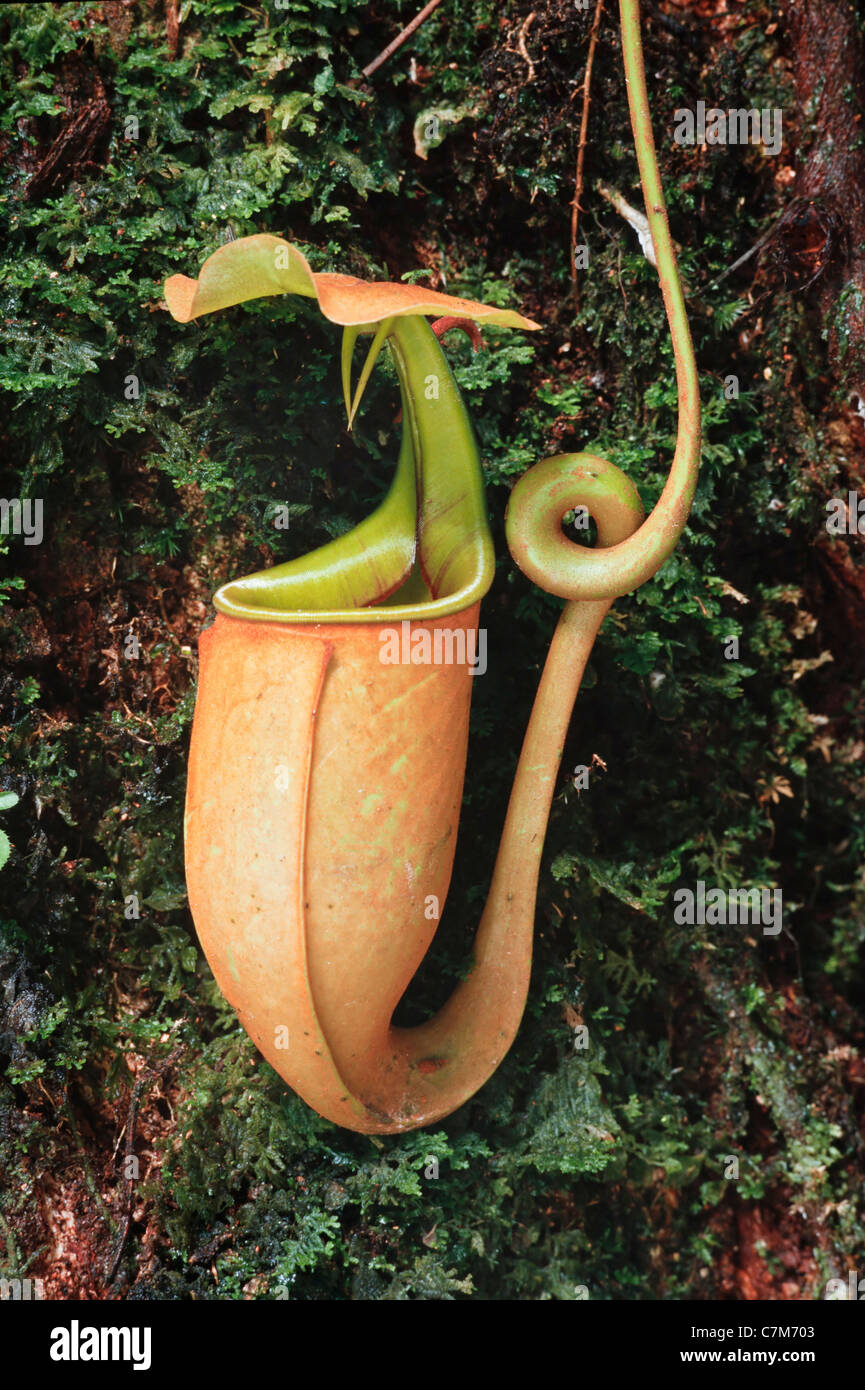Pitcher plant, Nepenthes bicalcarata (upper pitcher) Mulu National Park, Sarawak, Borneo, East Malaysia

Image details
Contributor:
Scenics & Science / Alamy Stock PhotoImage ID:
C7M703File size:
31.7 MB (1.5 MB Compressed download)Releases:
Model - no | Property - noDo I need a release?Dimensions:
2717 x 4079 px | 23 x 34.5 cm | 9.1 x 13.6 inches | 300dpiDate taken:
2 December 2010More information:
The two thorns that give N. bicalcarata its name are unique to this species and bear some of the largest nectaries in the plant kingdom. The purpose of these structures has long been debated among botanists. Frederick William Burbidge suggested that they might serve to deter arboreal mammals such as tarsiers, lorises and monkeys from stealing the contents of the pitchers. In an article published in 1982, Cliff Dodd speculated on the function of the thorns, but did not believe they play a role in prey capture. Charles Clarke observed that monkeys and tarsiers rip the pitchers open at the sides in order to feed from them, rather than reaching in through the pitcher mouth. However, he found that the mammals attacked the pitchers of N. bicalcarata less frequently than those of other species, such as N. rafflesiana. Clarke's observations suggest that the spines likely serve to lure insects into a precarious position over the pitcher mouth, where they may lose their footing and fall into the pitcher fluid, eventually drowning. A similar trapping method is employed by the Sumatran endemic N. lingulata, which has a single filiform appendage positioned over the pitcher mouth. However, in that species the appendage is a structure of the lid and not the peristome. Together with N. ampullaria and N. ventricosa, N. bicalcarata is unusual in that the glandular region of the pitcher extends almost to the peristome, such that there is little or no conductive waxy zone. The waxy zone functions by causing prey to slip and fall into the digestive fluid. A 2004 study found that the peristome of N. bicalcarata plays a very important role in prey capture. When it is dry, the peristome is very ineffective in catching insect prey, but when wetted, the capture rate increases more than three-fold.